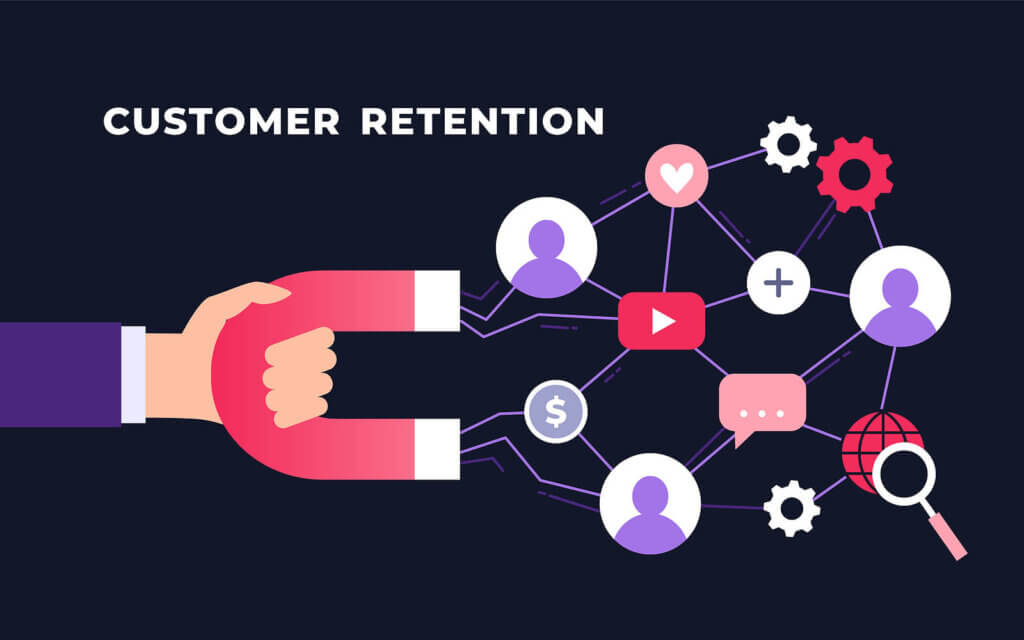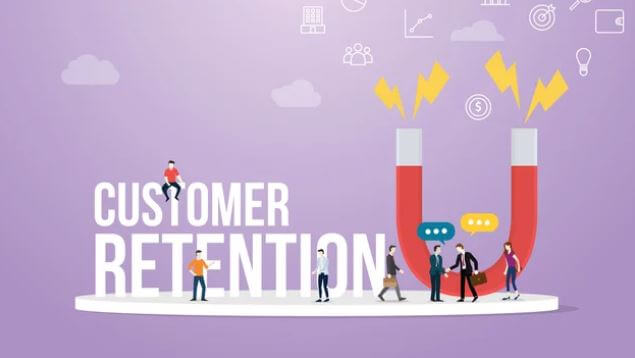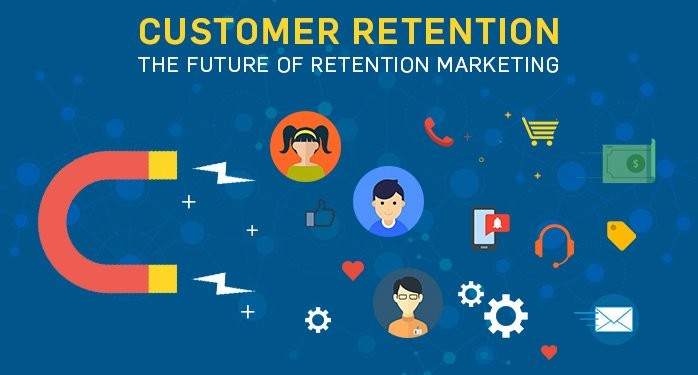Customer Retention
Introduction:
Customer retention keeps existing customers engaged and loyal to your brand, products, or services. It is a critical aspect of any successful business strategy, as it helps to increase customer lifetime value, reduce customer churn, and boost revenue. In this article, we will explore the importance of customer retention, strategies for improving retention, and how to measure and analyze retention rates to create a successful retention plan.
Why is customer retention necessary?
Acquiring new customers can be costly, and focusing on keeping existing customers happy and engaged is often more cost-effective. Here are some of the key benefits of customer retention:
- Increased revenue: Existing customers are more likely to purchase from you again and spend more money per transaction than new customers.
- Cost savings: It is often less expensive to retain existing customers than to acquire new ones, as the cost of advertising and marketing to new customers can be high.
- Word-of-mouth marketing: Happy customers are more likely to recommend your brand to others, which can help to attract new customers without additional marketing efforts.
- Brand loyalty: Building a loyal customer base can help to establish your brand as a trusted and reputable industry leader.
Understanding Your Customers:
The success of your customer retention efforts depends on how well you understand your customers. Understanding their needs, preferences, and behaviors can help you tailor your marketing and retention strategies to keep them engaged and loyal to your brand. Here are some critical steps to better understand your customers:
Segment your customer base:
One of the first steps in understanding your customers is to segment your customer base. Dividing your customers into smaller groups based on demographics, purchase history, or other relevant factors can help you better understand their needs and preferences. This can also help you tailor your marketing and retention strategies to each segment.
For example, if you run an e-commerce store, you might segment your customers based on purchase history. Customers who have made multiple purchases might receive different offers and incentives than those who have only made one.
Conduct customer surveys:
Another effective way to understand your customers is to collect feedback through customer surveys. Surveys can help you gauge customer satisfaction and identify areas for improvement. You can use the data you manage to change your products, services, or marketing strategies.
When designing your surveys, keep them short and to the point. Ask specific questions that will provide you with actionable insights.
Analyze customer behavior:
Tracking customer behavior, such as purchase history and website activity, can help you identify trends and patterns. For example, if you notice that customers who purchase certain products are more likely to make repeat purchases, you can use this information to create targeted retention campaigns.
You can use tools like Google Analytics or customer relationship management (CRM) software to track customer behavior.
Gather customer feedback:
Finally, it’s essential to gather feedback from your customers regularly. This can be done through customer feedback forms, reviews, and social media. By listening to your customers, you can better understand their needs and preferences and use this information to improve your products and services.
When gathering feedback, be sure to respond to customer concerns and complaints promptly and helpfully. This can go a long way in building customer loyalty and trust.
Understanding your customers is a critical component of successful customer retention. By segmenting your customer base, conducting surveys, analyzing behavior, and gathering feedback, you can gain valuable insights into your customer’s needs and preferences and use this information to create targeted retention strategies. Keeping your customers engaged and satisfied can build a loyal customer base and drive long-term business success.
Strategies for Improving Customer Retention:
Customer retention is a critical component of any successful business strategy. Keeping existing customers engaged and loyal can be more cost-effective than constantly acquiring new customers. Here are some effective techniques for improving customer retention:
Provide excellent customer service:
Providing excellent customer service is one of the most effective ways to improve customer retention. Customers who receive excellent service are likelier to remain loyal to your brand and recommend it to others.
To provide excellent customer service, ensure your customer service team is well-trained and equipped to handle customer issues and concerns promptly and efficiently. You can also invest in tools like chatbots and self-service portals to make it easier for customers to get their needed help.
Offer loyalty programs and incentives:
Loyalty programs and incentives can be powerful tools for retaining customers. By rewarding loyal customers with discounts, free products, or exclusive access to new products or services, you can encourage them to continue doing business with you.
When designing loyalty programs and incentives, ensure they align with your customer’s needs and preferences. For example, if you run a coffee shop, offering a loyalty program that rewards customers with a free coffee after a certain number of purchases might be adequate.
Personalize the customer experience:
Personalizing the customer experience can also be an effective way to improve customer retention. By tailoring your products, services, and marketing to each customer’s individual needs and preferences, you can create a more engaging and memorable experience.
One way to personalize the customer experience is to use customer data to create targeted marketing campaigns. For example, if a customer has purchased a particular product in the past, you might send them an email with a discount on a related product.
Build relationships with customers:
Building relationships with your customers can also help to improve customer retention. You can create a deeper connection beyond a simple transaction by getting to know your customers and showing genuine interest in their needs and preferences.
One effective way to build relationships with customers is to use social media. Engaging with customers on social media platforms like Twitter and Facebook can help you establish a more personal connection with them.
Improve product and service quality:
Finally, continually improving the quality of your products and services is essential. By listening to customer feedback and making changes accordingly, you can create a better experience for your customers and increase the likelihood that they will remain loyal to your brand.
To improve product and service quality, gather feedback from customers regularly. You can use customer surveys, reviews, and social media to collect feedback and make improvements.
Improving customer retention requires a multi-faceted approach that includes providing excellent customer service, offering loyalty programs and incentives, personalizing the customer experience, building customer relationships, and improving product and service quality. By implementing these strategies, you can make a loyal customer base that will help drive long-term business success.
Measuring and Analyzing Retention:
Measuring and analyzing customer retention is essential to creating a successful retention plan. By understanding your customer churn and mandates and analyzing customer feedback and behavior, you can identify areas for improvement and make data-driven decisions. Critical are some key steps to measuring and analyzing retention:
Measure customer churn and retention rates:
One of the first steps in measuring customer calculating is to calculate your customer churn and retention rates. Customer churn is the rate at which customers stop doing business with you, while retention rate is the rate at which customers continue doing business with you.
To calculate your churn rate, divide the number of customers who stopped doing business with your proven period by the total number of customers. To calculate your retention rate, subtract your churn rate from 100%.
Analyze customer feedback:
Analyzing customer feedback can help you understand why customers are leaving and identify areas for improvement. You can collect feedback through customer surveys, reviews, and social media.
When analyzing customer feedback, look for common themes or issues that customers are experiencing. This can help you make targeted improvements to your products, services, or marketing strategies.
Track customer behavior:
Tracking customer behavior, such as purchase history and website activity, can also help you identify patterns and trends. For example, if you notice that customers chasing a particular product are more likely to remain loyal, you can create targeted retention campaigns for those customers.
You can use tools like Google Anacs or customer relationship management (CRM) software to track customer behavior.
Identify areas for improvement:
Based on your analysis of customer churn rates, feedback, and behavior, identify areas for improvement. Thischangingking changes to your products or services, improving customer service, or creating targeted retention campaigns.
When identifying areas for improvement, prioritize those that will have the most significant impact on customer retention.
Make data-driven decisions:
Finally, use the data you collect to make informed, data-driven decisions. Avoid making assumptions about why customers are leaving or what they want. Instead, rely on data choices your choices and make improvements.
You are measuring and analyzing the customer retention tool component of creating a successful retention plan. By measuring churn and retention rates, analyzing customer feedback and behavior, and identifying areas for improvement, you can make informed decisions and improve customer retention over time.
Implementing Retention Strategies:
Once you have identified effective strategies for improving customer retention and measured and analyzed retention rates, the next step is implementing those strategies. Here are some critical steps to implementing retention strategies:
Create a retention plan:
The first step in implementing retention strategies is to create a retention plan. Your plan should include specific goals, timelines, and strategies for improving customer retention.
When creat, prioritize strategies that a customer’s your customers’ needs and preferences.
Train employees on retention strategies:
Your employees are a critical component of your retention strategy. Train them on effective retention strategies and provide them with the tools and resources needed to implement them.
For example, if you are implementing a sure loan gram, ensure your employees understand how the profaned customer questions about it.
Measure the success of retention efforts:
To determine the success of your retention essential, it’s important to measure and track retention rates over time. This will allow you to see whether your strategies adjustable adjustments as needed.
You can use tools like Google Analytics or your own CRM software to track retention rates and identify areas for improvement.
Adapting and evolving retention strategies over time:
Customer needs and preferences constantly change, evoessential developing and developing your retention strategies over time is essential. Monitor customer behavior and changemaker changes to your retention plan as needed.
For example, if customers increasingly use social media to communicate with your brand, you might consider investing in a social media customer service team.
Implementing effective retention strategies requires a comprehensive plan that includes training employees, measuring success, and adapting and evolving processes over time. You can improve customer retention and drive long-term business success by prioritizing customer needs and preferences and making data-driven decisions.
Conclusion:
Customer retention is a critical component of any successful business strategy. By keeping existing customers engaged and loyal, you can increase revenue, reduce customer churn, and build a loyal customer base to drive long-term business success. Here are some key takeaways from this article:
- Customer retention is essential: Acquiring new customers can be costly, so it’s often more cost-effective to focus on retaining existing customers. Customer retention can increase revenue, reduce customer churn, and build a loyal customer base.
- Understanding your customers is critical: To retain customers effectively; you must first understand their needs, preferences, and behaviors. Segment your customer base, conduct customer surveys, analyze customer behavior, and gather customer feedback to gain valuable insights into your customers.
- Effective retention strategies include: Providing excellent customer service, offering loyalty programs and incentives, personalizing the customer experience, building customer relationships, and improving product and service quality.
- Measuring and analyzing retention is essential: To create a successful retention plan, it’s necessary to measure and analyze customer churn and retention rates, as well as customer feedback and behavior. Use data to make informed decisions and identify areas for improvement.
- Implementing retention strategies requires a comprehensive plan: Create a retention plan, train employees on retention strategies, measure the success of retention efforts, and adapt and evolve retention strategies over time.
Customer retention is critical to long-term business success. By prioritizing customer needs and preferences, implementing effective retention strategies, and making data-driven decisions, you can build a loyal customer base to help your business thrive.
F.A.Q
What is customer retention, and why is it important?
Customer retention refers to keeping existing customers engaged and loyal to your brand, products, or services. It involves creating strategies and implementing tactics that will encourage customers to continue doing business with you over a long period.
Customer retention is essential for several reasons:
- Increased revenue: Existing customers are likelier to make repeat purchases and spend more money per transaction than new customers. By retaining customers, you can increase revenue and drive long-term business success.
- Cost savings: Acquiring new customers can be expensive, often involving marketing and advertising costs. By focusing on customer retention, you can reduce the cost of customer acquisition and improve your return on investment (ROI).
- Word-of-mouth marketing: Happy customers are more likely to recommend your brand to others, which can help to attract new customers without additional marketing efforts. This can be an effective way to grow your business while keeping costs low.
- Brand loyalty: Building a loyal customer base can help to establish your brand as a trusted and reputable industry leader. By prioritizing customer satisfaction and retention, you can differentiate your brand from competitors and establish a strong market position.
Overall, customer retention is a critical aspect of any successful business strategy. By keeping existing customers engaged and satisfied, you can drive revenue, reduce costs, and build a loyal customer base to help your business thrive over the long term.
What makes customer retention?
Several factors contribute to customer retention. These include:
- Customer satisfaction: Customers are more likely to continue doing business with a company if they are satisfied with the products, services, and customer service they receive. A high level of customer satisfaction is essential for customer retention.
- Customer loyalty programs: Loyalty programs, such as rewards or exclusive offers, can incentivize customers to continue doing business with a company. These programs can make customers feel valued and appreciated, encouraging them to remain loyal.
- Personalization: Personalizing the customer experience can make customers feel more connected to a brand. This includes personalized marketing, product recommendations, or customer service.
- Quality products and services: Consistently providing high-quality products and services can build customer trust and credibility. Customers are likelier to remain loyal to a company that consistently delivers quality products and services.
- Strong customer relationships: Building solid relationships with customers can help to establish trust and loyalty. This can involve personalized communication, active listening, and a commitment to customer satisfaction.
Overall, customCustomerlts from a combination of factors, including customer satisfaction, loyalty programs, personalization, quality products, and services, and strong customer relationships. By prioritizing these factors, companies can increase customer retention and drive long-term business success.






